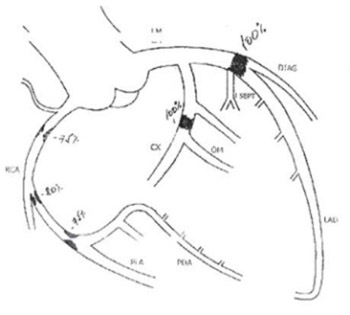Collateral Function in Patients with Coronary Occlusion Evaluated by 201Thallium Scintigraphy
DOI:
https://doi.org/10.17305/bjbms.2008.2881Keywords:
collaterals, myocardial perfusion scintigraphy, chronic total occlusionAbstract
The present study evaluated the impact of the angiographically documented collaterals on regional myocardial perfusion measured by 201thallium scintigraphy in patients with a chronic total occlusion.
The study included 60 patients with chronic total occlusion who underwent rest-stress myocardial perfusion scintigraphy and coronary angiography. All patients had angiographic evidence of coronary collaterals. Patients were divided into two groups: group one had well-developed coronary collateral vessels (n=35) and group II had poor coronary collateral development (n=25).
Patients with chronic total occlusion had severe and extensive stress-induced myocardial perfusion defects regardless of the grade of angiographic coronary collaterals. The perfusion defects in the group with good collaterals were predominantly reversible, suggesting that coronary collaterals preserved myocardial viability in the regions subtended by a total coronary occlusion. A significant correlation between good collaterals with complete protection and poor collaterals with no protection was noted.
Our results demonstrate a protective effect of collaterals on myocardial perfusion during coronary occlusion. The effective angiographic collaterals may prevent resting regional wall motion abnormalities but do not appear to protect against stress-induced perfusion defect.
Downloads














